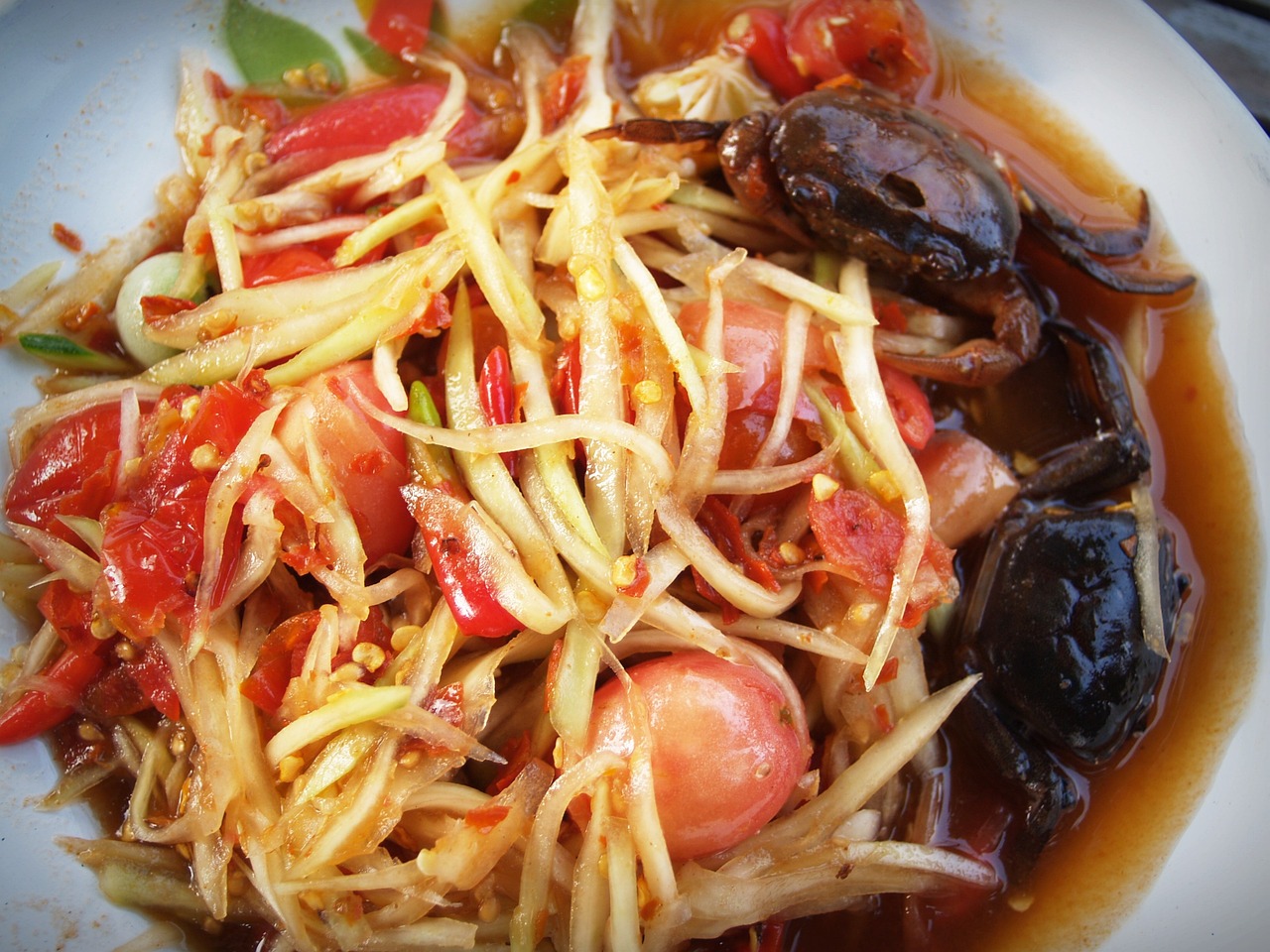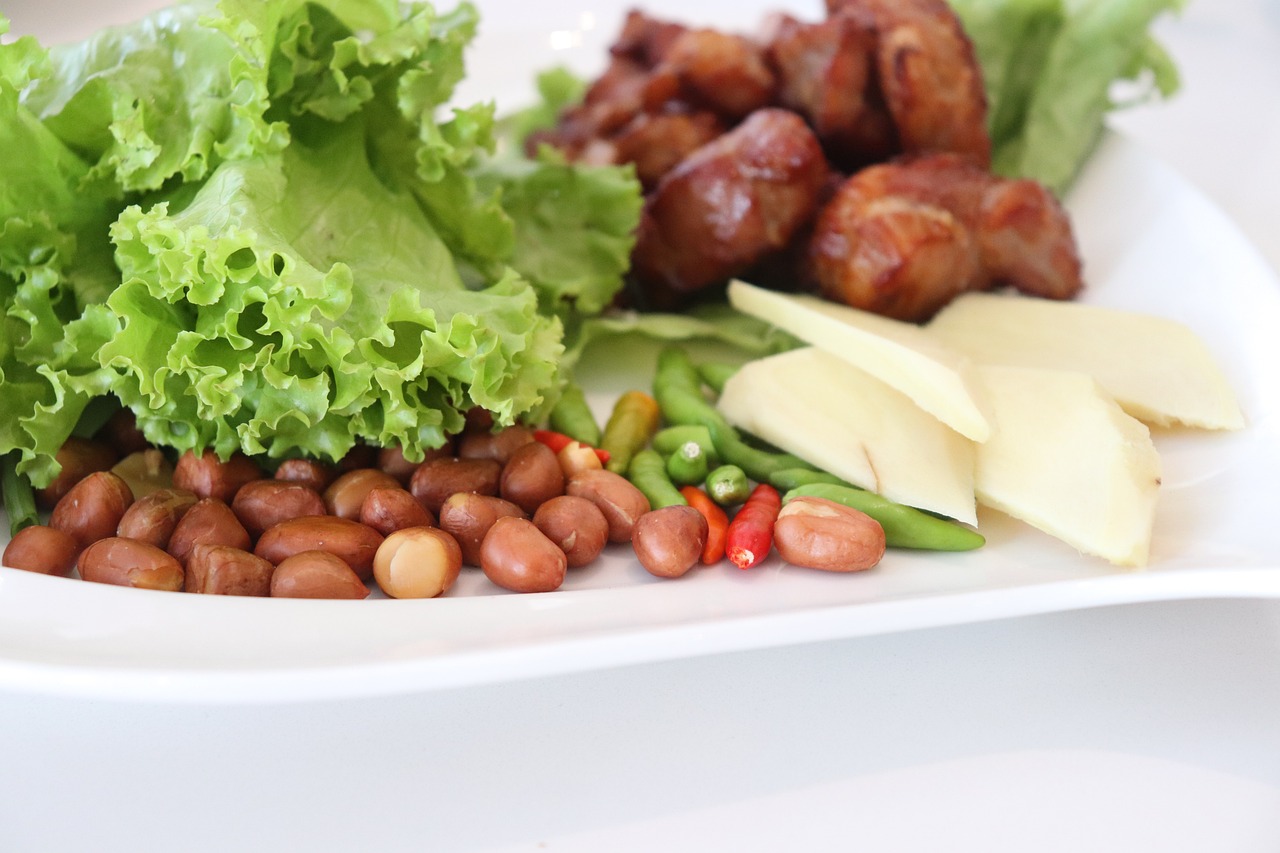Thai Peanut Noodles: A Fusion of Flavors

Thai Peanut Noodles are a delightful fusion of flavors that bring together the vibrant tastes of Thai cuisine with the rich creaminess of peanut sauce. This dish offers a unique culinary experience that is both comforting and exciting. Imagine a burst of savory, sweet, and spicy flavors dancing on your taste buds, creating a symphony of taste sensations that leave you craving more.
Origin of Thai Peanut Noodles
Thai Peanut Noodles have a captivating history that intertwines traditional Thai culinary practices with a modern twist, resulting in a dish that is beloved worldwide. The origins of Thai peanut noodles can be traced back to the bustling streets of Thailand, where vendors creatively blended local ingredients with influences from other cultures to create a harmonious fusion of flavors.
One of the key components in the creation of Thai peanut noodles is the rich and creamy peanut sauce, which adds a depth of flavor and texture to the dish. The use of peanuts in Thai cuisine can be attributed to the Chinese influence on Thai cooking, as peanuts were introduced to Thailand by Chinese immigrants centuries ago. Over time, Thai chefs incorporated peanuts into their dishes, leading to the development of the iconic peanut sauce used in Thai peanut noodles.
The combination of sweet, savory, and spicy flavors in Thai peanut noodles reflects the diverse culinary landscape of Thailand, where ingredients like coconut milk, lime, cilantro, and chili peppers are commonly used to create complex and vibrant dishes. This unique blend of flavors has made Thai peanut noodles a popular choice for those seeking a satisfying and flavorful meal.
Ingredients and Preparation
When it comes to creating Thai Peanut Noodles, the key lies in the carefully selected ingredients and the meticulous preparation process. The fusion of flavors in this dish is what sets it apart and makes it truly special. Let's delve into the essential components and steps required to whip up this delectable culinary delight.
First and foremost, let's talk about the star of the show - the peanut sauce. This rich and creamy sauce is made from a harmonious blend of peanut butter, soy sauce, sesame oil, lime juice, ginger, garlic, and a hint of spice for that extra kick. The peanut sauce is what gives the noodles their signature flavor and luscious texture.
Next, we have the noodles themselves. Traditionally, rice noodles are used in Thai Peanut Noodles for their light and delicate nature that allows them to absorb the flavors of the sauce beautifully. However, feel free to experiment with different types of noodles like egg noodles or even zucchini noodles for a healthier twist.
To add a burst of freshness and crunch to the dish, vegetables play a crucial role. Common choices include bell peppers, carrots, cabbage, and bean sprouts. These colorful and nutritious additions not only enhance the visual appeal of the dish but also provide a variety of textures that make each bite a delightful experience.
For protein, you can opt for chicken, shrimp, tofu, or even tempeh to cater to different dietary preferences. The protein source is typically marinated in a mix of soy sauce, sesame oil, and garlic to infuse it with flavor before being stir-fried to perfection.
Now, let's walk through the preparation process. Start by cooking the noodles according to the package instructions until they are al dente. While the noodles are cooking, prepare the peanut sauce by whisking together all the sauce ingredients until smooth and well combined.
In a separate pan, stir-fry the protein of your choice with a medley of colorful vegetables until they are cooked but still retain their crispness. Once the protein and vegetables are cooked, toss in the cooked noodles and the luscious peanut sauce. Stir everything together until the noodles are evenly coated in the sauce and all the components are well incorporated.
Finally, garnish your Thai Peanut Noodles with a sprinkle of chopped peanuts, fresh cilantro, and a squeeze of lime juice for an added burst of flavor. Serve the noodles hot and enjoy the explosion of Thai-inspired tastes in every mouthful.
Variations and Customizations
When it comes to Thai peanut noodles, the possibilities for variations and customizations are endless. Whether you're looking to add a personal touch or cater to specific dietary needs, there are plenty of options to explore. Here are some creative ways to customize your Thai peanut noodles:
- Vegetarian: For a meat-free option, you can easily swap out the protein in the dish with tofu, tempeh, or an assortment of fresh vegetables like bell peppers, broccoli, and snap peas. The vegetables not only add color and texture but also enhance the overall nutritional value of the dish.
- Gluten-Free: If you're following a gluten-free diet, simply substitute traditional wheat noodles with rice noodles or gluten-free pasta. Make sure to check the labels on store-bought sauces and condiments to ensure they are also gluten-free.
- Spicy: Heat things up by adding extra chili sauce, sriracha, or fresh chopped chili peppers to your Thai peanut noodles. The spicy kick will elevate the flavors and give the dish an extra zing that will leave your taste buds tingling.
By customizing your Thai peanut noodles to your liking, you can create a dish that suits your preferences and adds a personal flair to this already flavorful and aromatic meal. Whether you prefer a vegetarian option, need to adhere to a gluten-free diet, or simply enjoy a bit of heat in your dishes, there's a variation of Thai peanut noodles out there waiting for you to discover.
Serving and Pairing Suggestions
When it comes to serving and pairing Thai peanut noodles, there are several key factors to consider to ensure a delightful dining experience. The presentation of the dish plays a significant role in enhancing its appeal and setting the stage for a flavorful meal. Here are some serving and pairing suggestions to elevate your Thai peanut noodles:
- Serving Presentation: Serve Thai peanut noodles in a vibrant bowl or plate to showcase the colorful ingredients and inviting aroma. Garnish with fresh herbs like cilantro or Thai basil for a pop of freshness and visual appeal.
- Texture Contrast: Consider adding crunchy toppings such as chopped peanuts or sesame seeds to create a textural contrast with the soft noodles and creamy peanut sauce. This adds an exciting element to each bite.
- Spice Level: Adjust the spice level of the dish according to your preference. For those who enjoy a kick of heat, sprinkle some red pepper flakes or drizzle a bit of chili oil on top. If you prefer a milder flavor, reduce the amount of chili paste or omit it altogether.
- Beverage Pairings: Pairing Thai peanut noodles with the right beverage can enhance the overall dining experience. Consider options such as:
- Thai Iced Tea: The sweet and creamy flavors of Thai iced tea complement the savory and slightly spicy notes of the noodles.
- Crisp White Wine: A light and crisp white wine like Sauvignon Blanc or Riesling can balance the richness of the peanut sauce.
- Citrusy Beer: A citrus-infused beer or a light lager can provide a refreshing contrast to the bold flavors of the dish.
- Cool Coconut Water: For a non-alcoholic option, coconut water offers a tropical twist that pairs well with the coconut milk often found in Thai peanut noodles.
- Accompaniments: Consider serving Thai peanut noodles with a side of fresh cucumber slices, lime wedges, or pickled vegetables to add brightness and acidity to the meal. These accompaniments can help cleanse the palate between bites and enhance the overall flavor profile.
By paying attention to these serving and pairing suggestions, you can create a harmonious dining experience that celebrates the fusion of flavors in Thai peanut noodles. Whether enjoying it as a quick weeknight meal or as part of a special gathering, these tips can help you make the most of this delicious dish.



 HazalVardal
HazalVardal 





